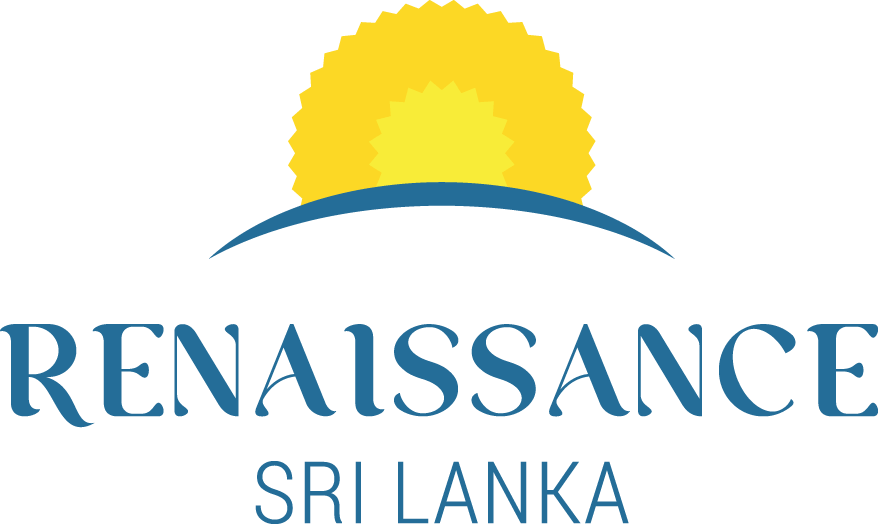Organized, data-driven decision-making in agriculture is essential
In the contemporary agricultural landscape, data-driven decision-making is essential for effective resource management, policy formulation, and agricultural development. Despite significant efforts by the state to acquire comprehensive island-wide data through initiatives such as resource books, land use maps, disaster maps, and environmental data, access to this information remains limited for key policymakers and agricultural actors. This lack of access results in the underutilization or unuse of vast resources. Moreover, concerns about data reliability and the lack of triangulation in existing repositories further exacerbate the issue. The establishment of a geospatial archival base and clearinghouse will be addressing these issues.
The Need for a Strategic Information Leveraging and Optimization (SILO) clearinghouse.
Agricultural stakeholders, including policymakers, farmers, researchers, and industry players, rely on accurate and timely data to make informed decisions. However, the current state of data accessibility and reliability is far from optimal. The SILO clearinghouse aims to create an enabling environment for the acquisition, collection, correlation, analysis, and dissemination of high-quality leveraged data from across the island. By addressing existing issues and enhancing data management, the SILO clearinghouse will play a pivotal role in transforming the agricultural sector.
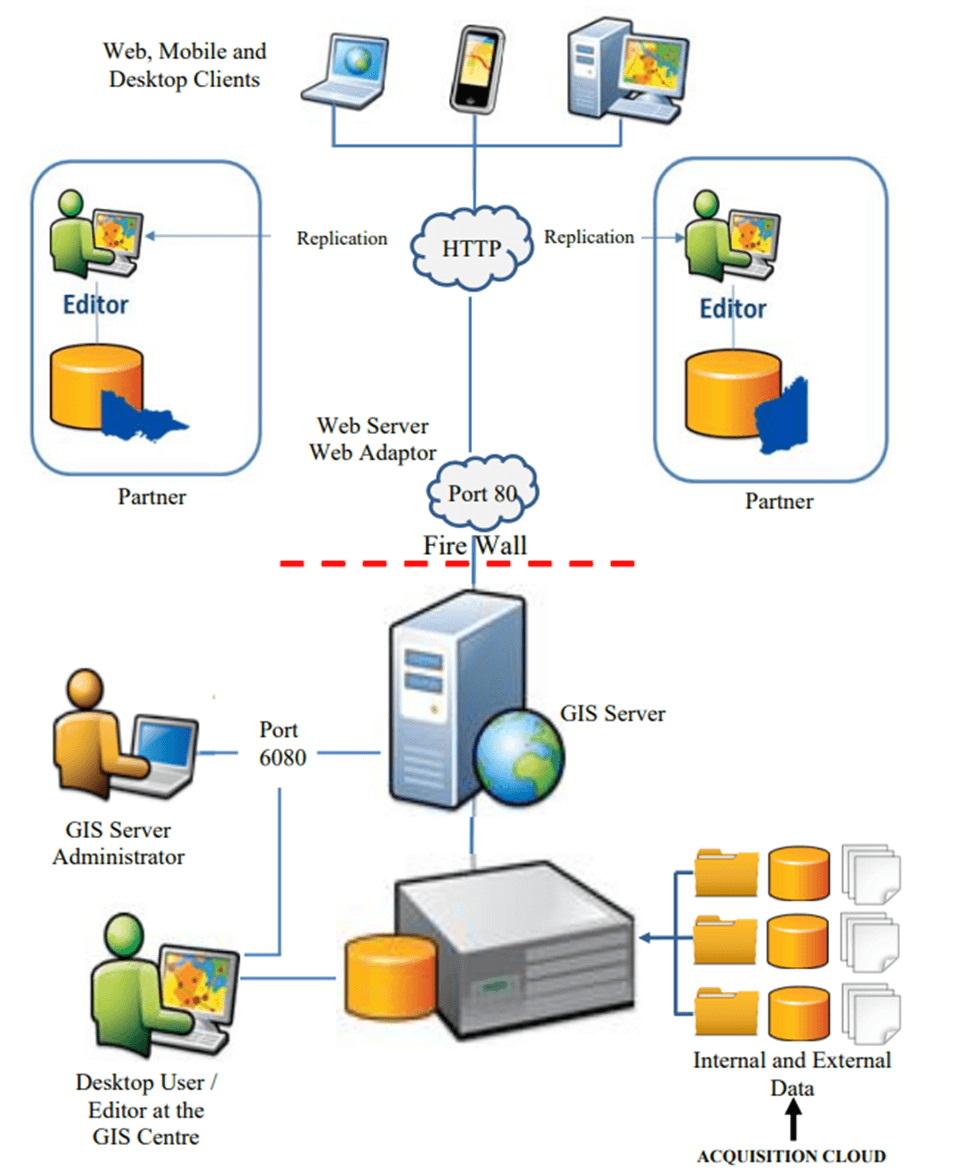
SILO information system © Hector Kobbekaduwa Agrarian Research and Training Institute
Components of the SILO Clearinghouse
The SILO clearinghouse will encompass various types of data critical for agrarian and agricultural decision-making. These components include:
- Agricultural Resources: Data on crop mixes, agrobiodiversity, density, distribution, and Agri-inputs.
- Natural Resources: Information on ecosystem services to agriculture, water dynamics, and the health of land, water, and air for agricultural practices.
- Physical Agricultural Resources: Details about infrastructure, built resources and equipment.
- Knowledge Resources: Research findings in the agrarian sector.
- Agrarian Governance: Data on citizen demographics, state and non-state manpower, administrative and legal frameworks.
- Agrarian Logistics: Information on transport, power requirement and communications infrastructure.
- Agricultural Markets: Data on local district, provincial and overseas produce and value-added product markets.
- Citizen Wellbeing: Health and nutrition -related information, including indigenous medicine and pharmaceuticals.
Implementation Phases
The implementation of the SILO clearinghouse will be a comprehensive five-year exercise, divided into four key phases:
Phase 1: Initial Setup and Strategic Planning
Setting Up the SILO Unit: Establish a minimalistic SILO unit to initiate base data capture and assess the quality of the base data through Data Quality Assessment (DQA).
Monitoring and Evaluation (M&E): Establish an M&E unit to create a long-term strategic proposal for leveraging required funds for subsequent years (2023-2025 and beyond).
Phase 2: Expansion and Capacity Building
Expansion of SILO Unit: Develop the unit into a full-fledged, server-driven Geographic Information System (GIS) mapping system.
Information Security: Ensure robust information security measures.
Capacity Building: Provide necessary capacity building to data extraction points across the island to gather high-quality data.
Phase 3: Consolidation and Assessment
Consolidate Activities: Strengthen the SILO unit’s activities and initiate an independent assessment to evaluate its impact. Reporting Report on the system’s impact and optimization for efficiency, quality, and sustainability.
Phase 4: Long-Term Sustainability
Funding: Secure long-term funding through overseas grants or soft loans based on the strategic proposal created in Phase 1.
Sustainability Metrics: Ensure the system’s sustainability by optimizing impact, efficiency, and quality metrics.
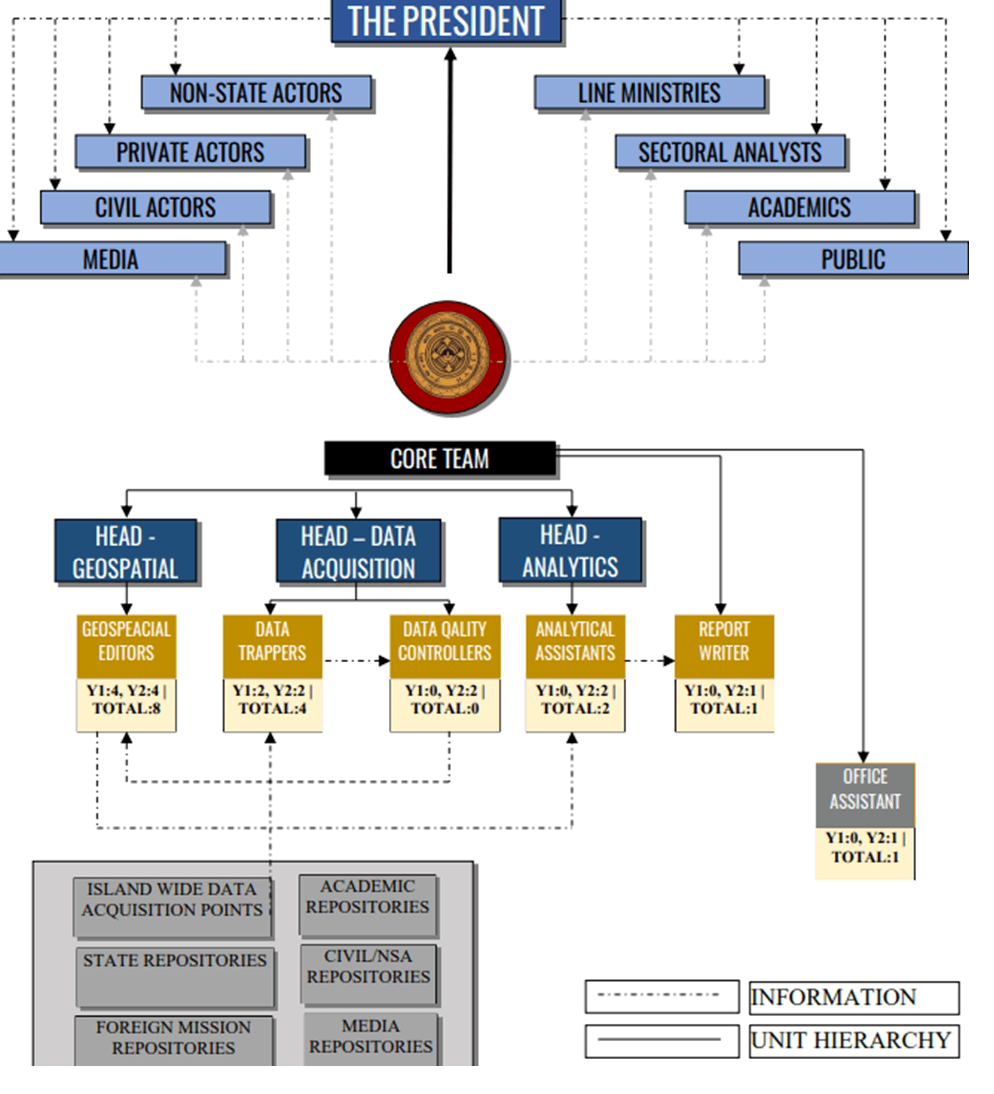
Structure of information acquisition mechanism and ICT infrastructure © Hector Kobbekaduwa Agrarian Research and Training Institute
Structure of Information Acquisition
The structure of information acquisition and the required Information and Communication Technology (ICT) infrastructures. This framework will guide the systematic collection, processing, and dissemination of data, ensuring that all stakeholders have access to reliable and actionable information.
Inter-Agency Cooperation for Monitoring and Evaluation (M&E)
Effective monitoring, validating, and reporting (MVR) are crucial for the successful implementation of the SILO clearinghouse. Given the massive volume of data streaming from various touchpoints across the island, no single agency can handle this task alone. However, the execution of M&E will require significant inter- agrarian agency cooperation to ensure comprehensive data acquisition and plan implementation.
Enhancing National Nutrition Policy
Improving the national nutrition policy is another critical aspect that complements the SILO clearinghouse initiative. The current policy is vague on the source of nutrition, leading to a default reliance on processed foods and supplements. To address this, the policy must emphasize nutrition through food over processed options. Rewarding primary producers who optimize nutrition density in their production will encourage healthier dietary practices among citizens.
Promoting Knowledge of Heirloom Crops
Heirloom crops, optimized for organic farming, hold significant potential for sustainable agriculture. However, knowledge about these crops is currently limited to a small demographic of committed organic practitioners. Extracting and disseminating this knowledge will require collaboration with state agencies, Civil Society Organizations (CSOs), and grassroots communities. Triangulating information from diverse sources and acknowledging the reliability of data will be essential in this effort.
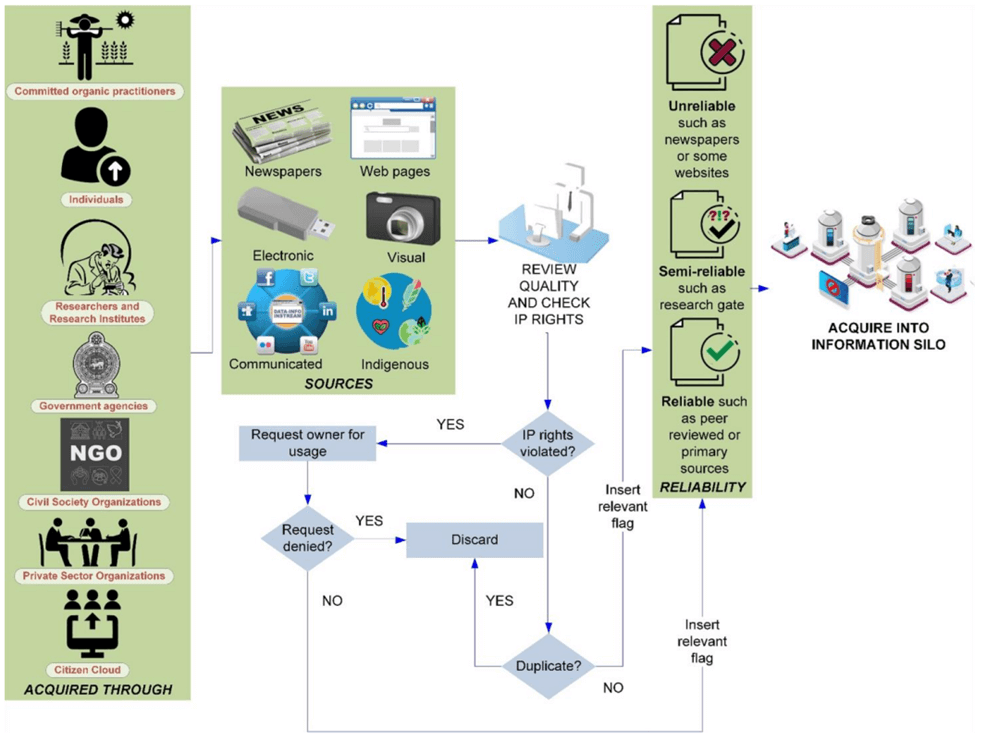
Basic Acquisitions Model for Heirloom Varieties © Hector Kobbekaduwa Agrarian Research and Training Institute
Strategies for Organic Input Production
Enhancing national capabilities to produce organic inputs is vital for sustainable agriculture. A multi-stakeholder dialogue involving state fertilizer companies, private sector players, individual farmers, and small-scale innovators will be necessary to develop effective strategies. Subsidizing nutrition density in inputs rather than yield density will encourage farmers to adopt organic practices.
Whole-of-Nation Approach to Food Production
To address the current food crisis, a whole-of-nation approach is needed, where consumers also become producers. Encouraging households to grow their own food can reduce food miles, transport costs, and overall food consumption while increasing nutrition and reducing food toxins. A massive awareness campaign, spearheaded by state agencies and an experienced advertising agency, will be crucial in promoting this strategy.
Optimizing Ecological Sustainability
Integrating agro-ecology, conservation, citizen natural resource management, conventional environmental science, circular economics, and social wellbeing is essential for ecological sustainability. Collaboration between agrarian and green economic committees will ensure a holistic approach to optimizing green cover, agroforestry, and dark forest cover.
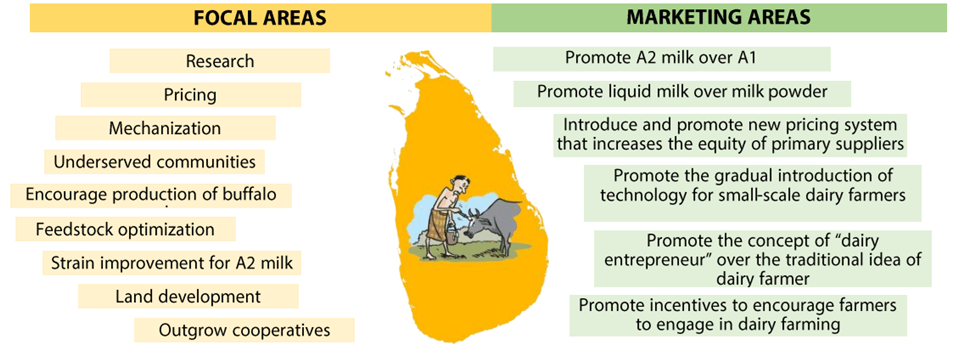
Areas to consider in Bovien Resources Improvement © Hector Kobbekaduwa Agrarian Research and Training Institute
Developing Agrarian Livestock and Organic Fertilizer
The strategy for agrarian livestock development should focus on improving the quality of livestock manure for organic fertilizer production. Collaboration between livestock stakeholders, private sector organizations, and agrarian research agencies will be key. Emphasizing non-meat diets and promoting heirloom chicken varieties for eggs and dung can enhance sustainability in chicken farming. Similarly, encouraging A2 milk-producing local and hybrid bovine varieties will boost dung and milk production while providing labor for agricultural activities.
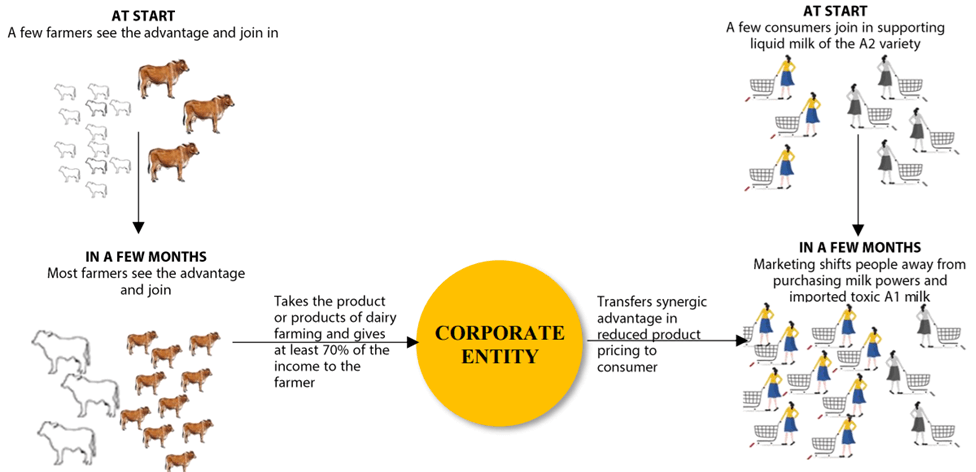
Dual marketing model for encouraging shift to livestock farming and shift to A2 Milk Consumption as producer to improving manure stocks for fertilizer manufacture © Hector Kobbekaduwa Agrarian Research and Training Institute
How Renaissance Sri Lanka Can Lead the Way in Establishing the SILO Clearinghouse
At Renaissance Sri Lanka we are committed to transforming agriculture in Sri Lanka through innovative solutions and collaborative efforts. The establishment of a multi-stakeholder agrarian and agricultural data and information clearinghouse presents a remarkable opportunity to enhance data accessibility, reliability, and utilization in the agricultural sector. Here’s what we can do to make this vision a reality:
Promote Inter-Agency Cooperation – Renaissance Sri Lanka can play a pivotal role in fostering inter-agency cooperation. By bringing together government agencies, research institutions, private companies, and farmer organizations, we can ensure that SILO benefits from a wide range of perspectives and expertise. This collaborative approach will facilitate the sharing of valuable data and insights, leading to more informed decision-making and optimized resource management.
Enhance National Nutrition Policies – The SILO clearinghouse can significantly enhance national nutrition policies by providing accurate and comprehensive data on food production, consumption, and nutritional status. Renaissance Sri Lanka can work closely with policymakers to integrate this data into strategies that address malnutrition and promote healthy eating habits across the country.
Promote Knowledge of Heirloom Crops – Heirloom crops are an essential part of Sri Lanka’s agricultural heritage. Through the SILO clearinghouse, Renaissance Sri Lanka can promote knowledge and cultivation of these crops, ensuring their preservation and boosting biodiversity. This initiative will also support farmers in identifying and adopting sustainable practices that are in harmony with local ecosystems.
Develop Strategies for Organic Input Production – Renaissance Sri Lanka can lead the charge in developing strategies for organic input production. By prioritizing the creation of high-quality organic inputs, we can reduce dependence on imports and enhance food security. This effort will involve research, education, and investment in organic farming practices, ultimately contributing to the holistic development of agriculture in Sri Lanka.
Conclusion
The establishment of a multi-stakeholder agrarian and agricultural data and information clearinghouse is a transformative step towards enhancing data accessibility, reliability, and utilization in the agricultural sector. The SILO clearinghouse, with its comprehensive components and phased implementation, will enable informed decision-making, optimize resource management, and promote sustainable agricultural practices. By fostering inter-agency cooperation, enhancing national nutrition policies, promoting knowledge of heirloom crops, and developing strategies for organic input production, the SILO clearinghouse will contribute to the holistic development of agriculture in Sri Lanka.
Reference
Hector Kobbekaduwa Agrarian Research and Training Institute. Roadmap for Converting Sri Lanka to organic farming Accessed May 2024



